Abstract
Polygalacturonase activity has been detected in a number of plants including seedlings of Phaseolus vulgaris, Zea mays, Avena sativa, and Pisum sativum. Particular emphasis was placed on characterizing the enzyme from oat seedlings. This enzyme is solubilized by 0.2 m NaCl, and its activity is highest near the apical tips of oat coleoptiles. It has a pH optimum between 5 and 5.5 and is activated by Ca2+, with an optimal concentration of 0.4 mm. Cd2+ also activates the enzyme but less effectively than Ca2+. The rate of attack is maximal for substrates with chain lengths of about 20 units and slowest for digalacturonate. The oat enzyme hydrolyzes galacturonans by removing galacturonic acid units from the nonreducing ends and progressively shortens the substrate chains.
Full text
PDF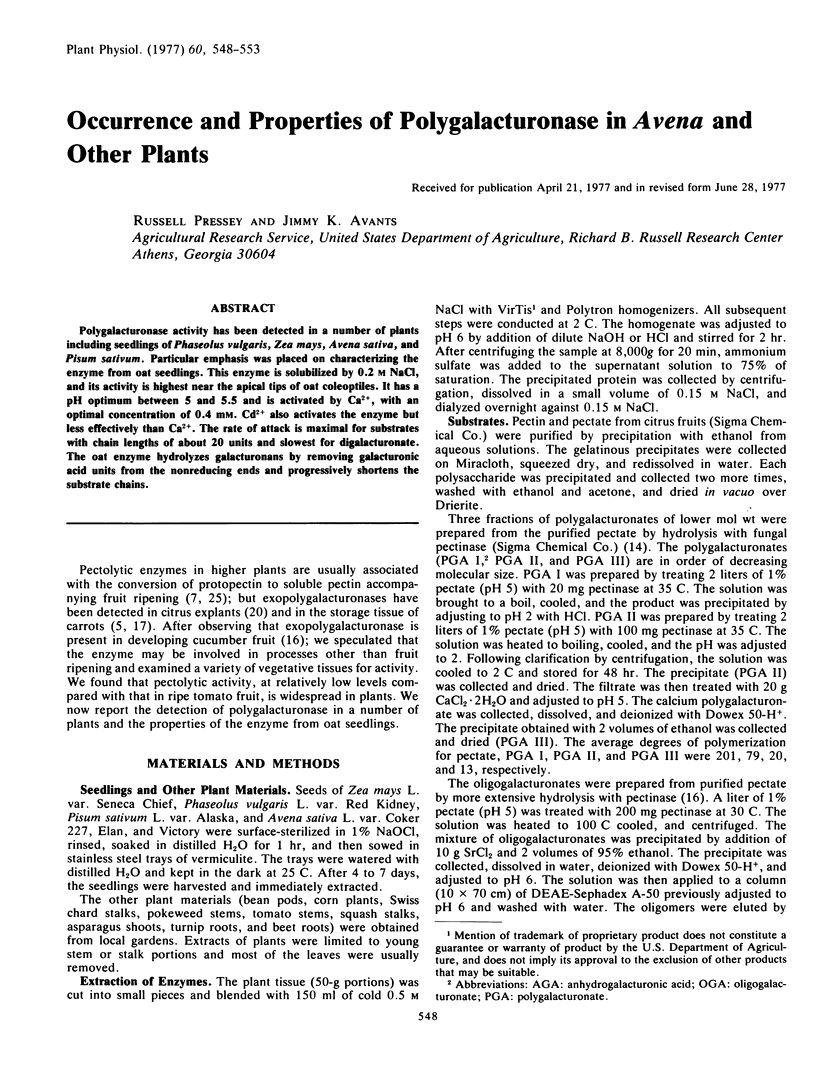
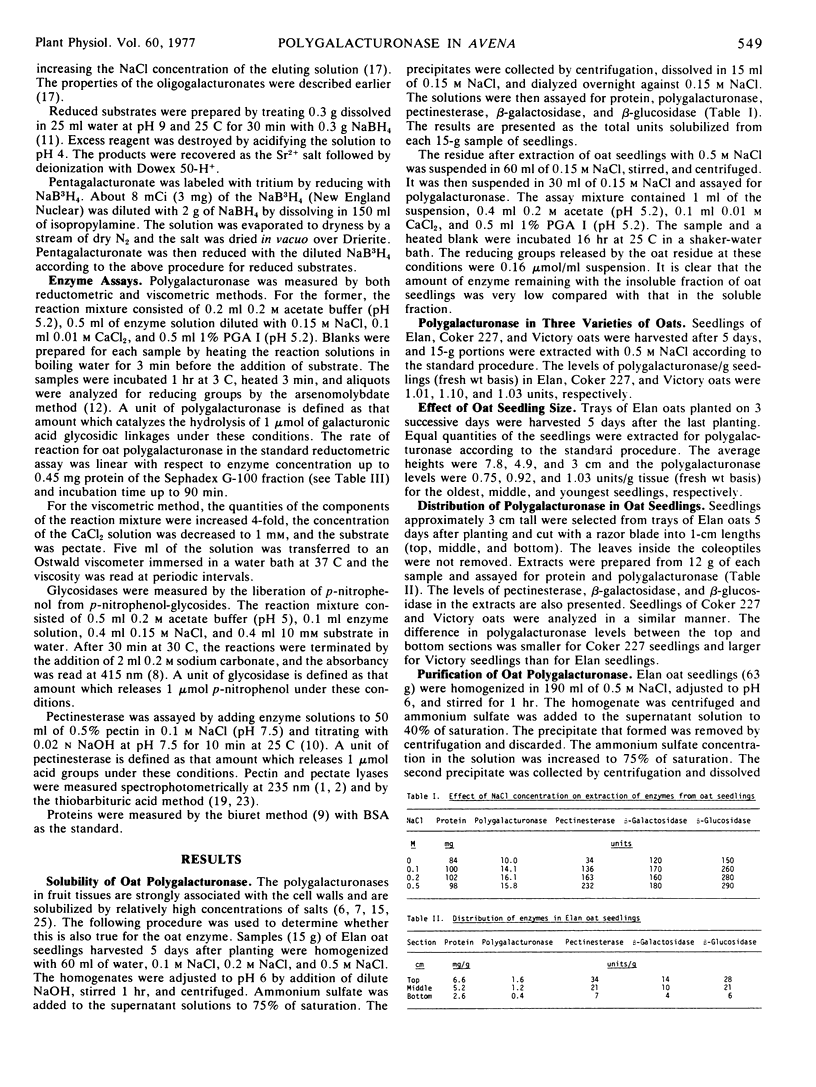
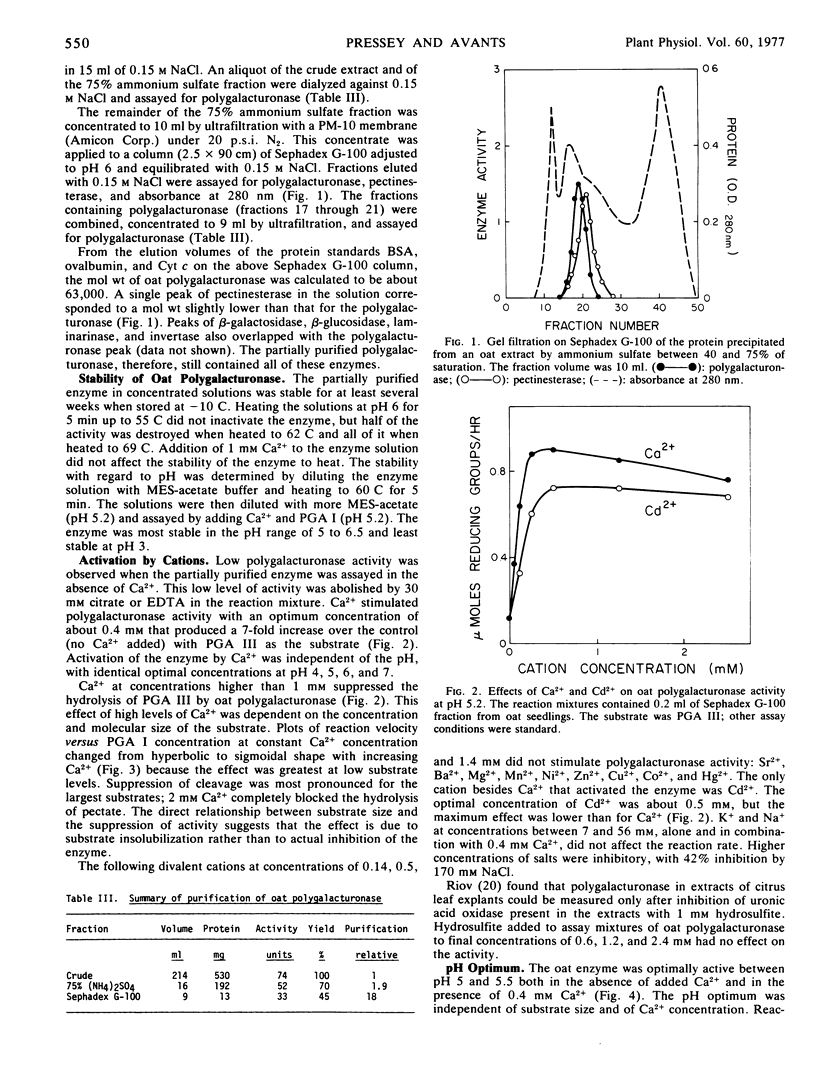
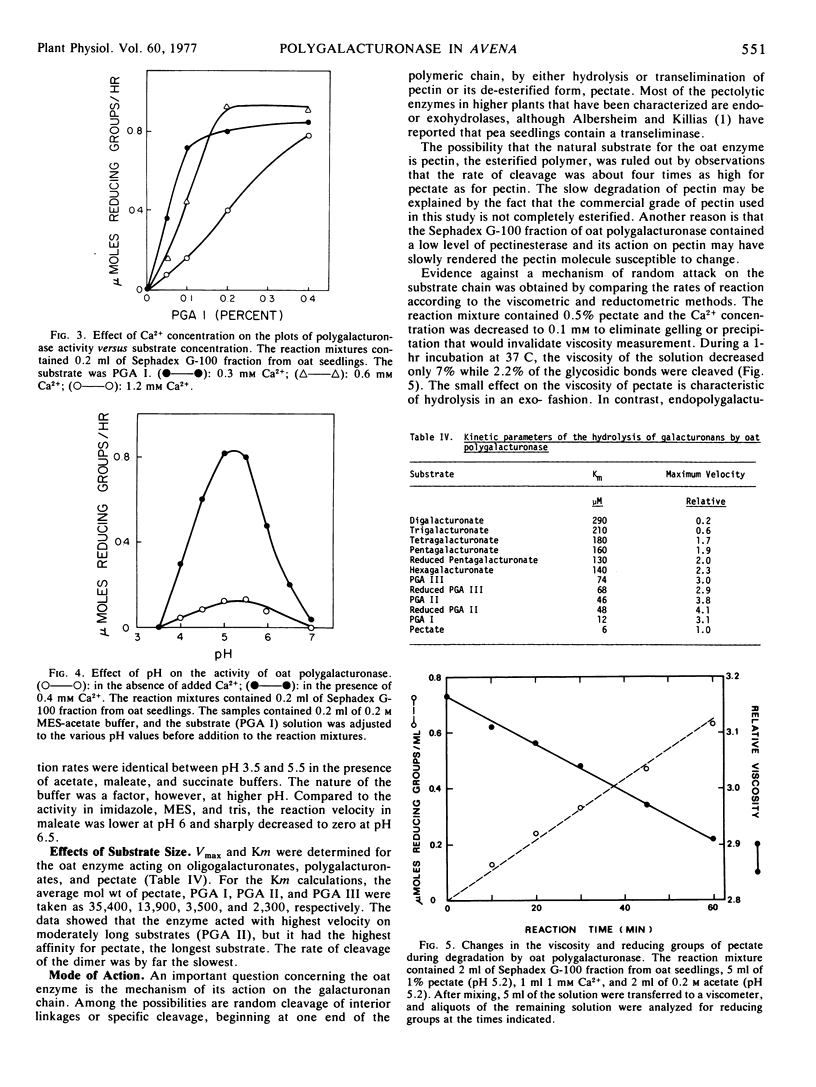
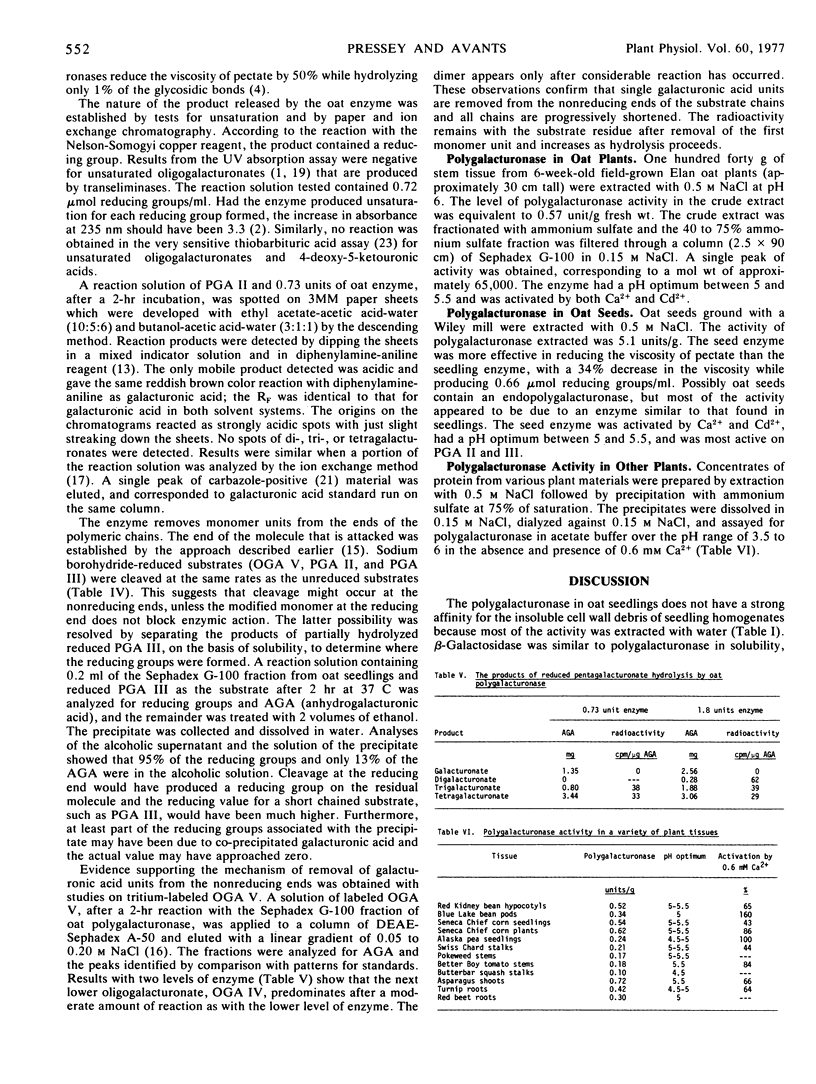
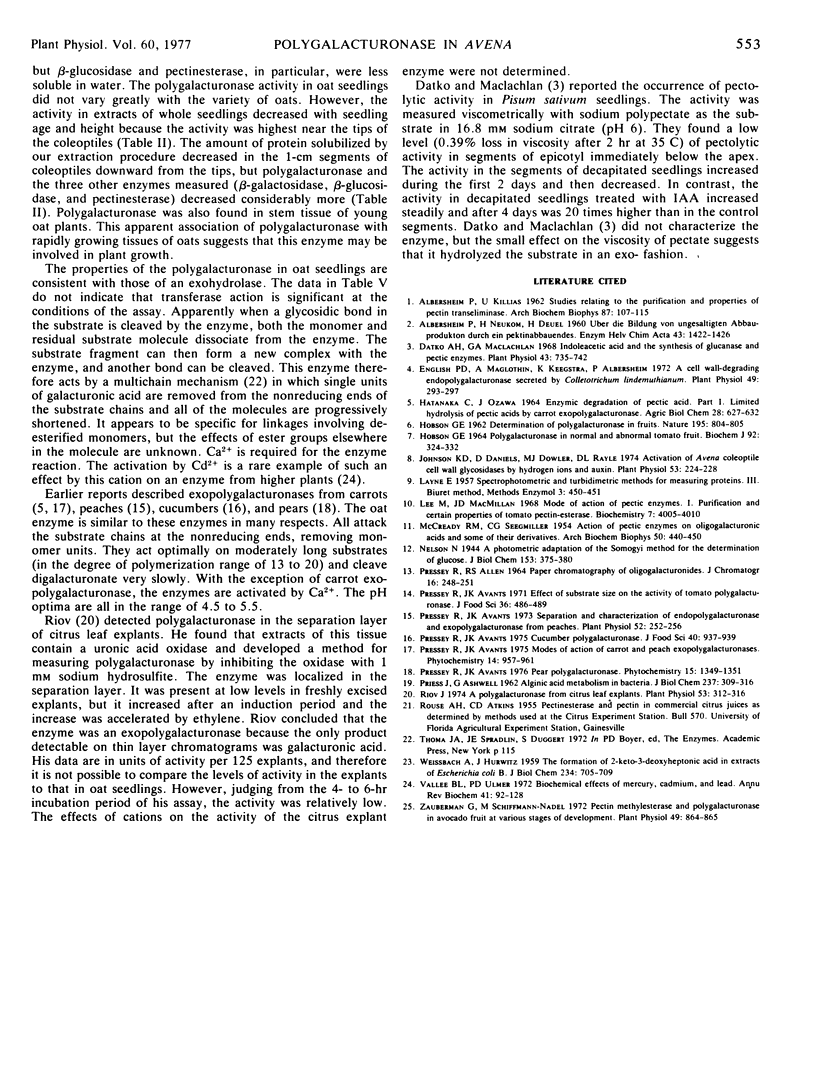
Selected References
These references are in PubMed. This may not be the complete list of references from this article.
- ALBERSHEIM P., KILLIAS U. Studies relating to the purification and properties of pectin transeliminase. Arch Biochem Biophys. 1962 Apr;97:107–115. doi: 10.1016/0003-9861(62)90050-4. [DOI] [PubMed] [Google Scholar]
- Datko A. H., Maclachlan G. A. Indoleacetic Acid and the synthesis of glucanases and pectic enzymes. Plant Physiol. 1968 May;43(5):735–742. doi: 10.1104/pp.43.5.735. [DOI] [PMC free article] [PubMed] [Google Scholar]
- English P. D., Maglothin A., Keegstra K., Albersheim P. A Cell Wall-degrading Endopolygalacturonase Secreted by Colletotrichum lindemuthianum. Plant Physiol. 1972 Mar;49(3):293–298. doi: 10.1104/pp.49.3.293. [DOI] [PMC free article] [PubMed] [Google Scholar]
- HOBSON G. E. Determination of polygalacturonase in fruits. Nature. 1962 Aug 25;195:804–805. doi: 10.1038/195804a0. [DOI] [PubMed] [Google Scholar]
- Hobson G. E. Polygalacturonase in normal and abnormal tomato fruit. Biochem J. 1964 Aug;92(2):324–332. doi: 10.1042/bj0920324. [DOI] [PMC free article] [PubMed] [Google Scholar]
- Johnson K. D., Daniels D., Dowler M. J., Rayle D. L. Activation of Avena coleoptile cell wall glycosidases by hydrogen ions and auxin. Plant Physiol. 1974 Feb;53(2):224–228. doi: 10.1104/pp.53.2.224. [DOI] [PMC free article] [PubMed] [Google Scholar]
- Lee M., Macmillan J. D. Mode of action of pectic enzymes. I. Purification and certain properties of tomato pectinesterase. Biochemistry. 1968 Nov;7(11):4005–4010. doi: 10.1021/bi00851a030. [DOI] [PubMed] [Google Scholar]
- McCREADY R. M., SEEGMILLER C. G. Action of pectic enzymes on oligogalacturonic acids and some of their derivatives. Arch Biochem Biophys. 1954 Jun;50(2):440–450. doi: 10.1016/0003-9861(54)90060-0. [DOI] [PubMed] [Google Scholar]
- PREISS J., ASHWELL G. Alginic acid metabolism in bacteria. I. Enzymatic formation of unsaturated oligosac-charides and 4-deoxy-L-erythro-5-hexoseulose uronic acid. J Biol Chem. 1962 Feb;237:309–316. [PubMed] [Google Scholar]
- PRESSEY R., ALLEN R. S. PAPER CHROMATOGRAPHY OF OLIGOGALACTURONIDES. J Chromatogr. 1964 Oct;16:248–251. doi: 10.1016/s0021-9673(01)82474-2. [DOI] [PubMed] [Google Scholar]
- Pressey R., Avants J. K. Separation and characterization of endopolygalacturonase and exopolygalacturonase from peaches. Plant Physiol. 1973 Sep;52(3):252–256. doi: 10.1104/pp.52.3.252. [DOI] [PMC free article] [PubMed] [Google Scholar]
- Vallee B. L., Ulmer D. D. Biochemical effects of mercury, cadmium, and lead. Annu Rev Biochem. 1972;41(10):91–128. doi: 10.1146/annurev.bi.41.070172.000515. [DOI] [PubMed] [Google Scholar]
- WEISSBACH A., HURWITZ J. The formation of 2-keto-3-deoxyheptonic acid in extracts of Escherichia coli B. I. Identification. J Biol Chem. 1959 Apr;234(4):705–709. [PubMed] [Google Scholar]
- Zauberman G., Schiffmann-Nadel M. Pectin methylesterase and polygalacturonase in avocado fruit at various stages of development. Plant Physiol. 1972 May;49(5):864–865. doi: 10.1104/pp.49.5.864. [DOI] [PMC free article] [PubMed] [Google Scholar]


